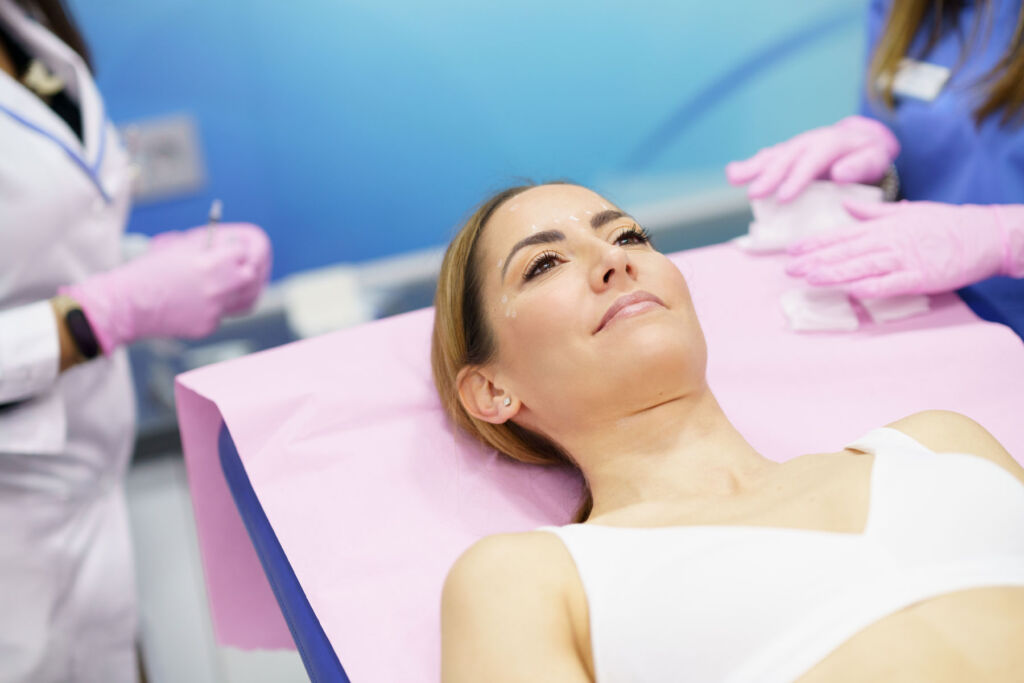

As we grow older, our faces change in multiple ways and, with it, how we look. A face that might look proportionally perfect in our teens is likely to look very different two or three decades later. Can Micro-needling help to maintain a person’s looks more naturally? We ask an industry expert.
In today’s world, it’s not ‘beyond the pale’ to say that looks, count. A quick browse of some social media platforms will show you millions of faces manipulated with filters, clever lighting, make-up, software and all manner of high-level wizardry.
I’d guess these people are doing this partly out of self vanity, to elevate their social standing or help further their careers. I’m not knocking people for doing this, as, after all, most of us want to present the best possible version of ourselves to others.


Ageing is something that some people are comfortable with. You’ve probably heard someone saying, “I want to grow old gracefully,” which is someone’s way of saying that they’ve given up trying to retain their looks or are simply not concerned and are comfortable with their ageing appearance.
However, a significant number of people will try everything possible to turn back time and retain as much of their youthful looks as they can.
As we grow older, the skin on one’s faces changes. Take, for example, the nose. What might have looked perfectly sculpted and proportional when younger will, over time, lose elasticity with the soft tissue underneath stretching and weakening and a thickening of the skin in the noses tip, and it’s not only the nose that is subject to this type of thing. It happens to all of us, and we have to live with it; or do we?
There are countless treatments that all claim to help with or even achieve, making people look more youthful. Knowing which ones to try and which ones to avoid at all costs is a bit of a minefield.
Walk around any leading supermarket, and you’re almost sure to come across rows of creams and potions claiming to restore one’s youth, with many stating words such as “clinical trials”, “proven”, and “scientifically”. Most people tend to see these words and assume that they’ll do exactly what’s on the box, whilst others know it’s, more often than not, clever marketing.
When it comes to anything to do with the face and ways to improve skin texture and toning, we turn to the leading medical aesthetician William Foley. William (right) specialises in improving how people look at the One Aesthetics Studio in Alderly Edge and London’s renowned Harley Street.
Luxurious Magazine: What is Micro-needling, and what is the benefit of having it?
William Foley: Microneedling is a skin rejuvenation method that uses very short, fine sterilised needles inserted into the skin. People will also know this as collagen induction therapy. There are many benefits to having this procedure that include the treatment of acne scarring, collagen stimulation and lifting and tightening the skin. Patients can see significant results from having this treatment.
LM: There’s a wide variety of Microneedling products and services available in the market; what is the difference between them and the treatments you provide?
William: I would always advise people to avoid buying off-the-shelf micro-needling products, whether online or in beauty shops, etc. Using these at home can actually worsen skin conditions and, in a worst-case scenario, could cause scarring.
In-clinic treatments are always the way forward, but you need to do your research as you need to be confident that practitioner knows what they are doing in this field. The Micro-needling treatments that I provide in the clinic are all performed using medical-grade devices, and luckily for me, I work alongside a plastic surgeon, so my training is In-depth.
LM: Can anyone have Microneedling?
William: I wouldn’t say everyone is suitable for micro-needling as there are many factors to take into consideration. For instance, people’s skin type, skin indication and if the patient suffers from keloid scarring, and what method of micro-needling you are going to use for a patient. Let me give you an example. A darker skin type can suffer more from PIH (post-inflammatory hyperpigmentation) when using Micro-needling and radiofrequency. With a patient of this skin type, I would use different methods.
LM: Can Microneedling be regarded as a ‘quick-fix’? How long will it take for people to notice positive results?
William: Nobody should think that micro-needling is a quick fix for any skin indication. It takes time and careful guidance from your practitioner to achieve the right results. Don’t forget that your skin cycle takes up to 28 days to renew and collagen around six weeks. So, patience is needed when having this procedure done.
LM: Is Microneedling a treatment that you need to continue with year after year?
William: I would absolutely recommend micro-needling every year for my patients from a skin rejuvenation perspective. Sometimes with patients with acne scarring, I would recommend a course of three, twice a year, and this again depends on the skin indication.
LM: Thank you for your time. Is there anything else you’d like to add?
William: My device of choice is the 3D Dermaforce by the company 3D Lipo aesthetics. We have been using it in the clinic for many months, and we are getting great results for our patients.
People who would like a clinical consultation or a virtual consultation can contact me via William_medical_aesthetician on Instagram.
Read more beauty guides and features here.
